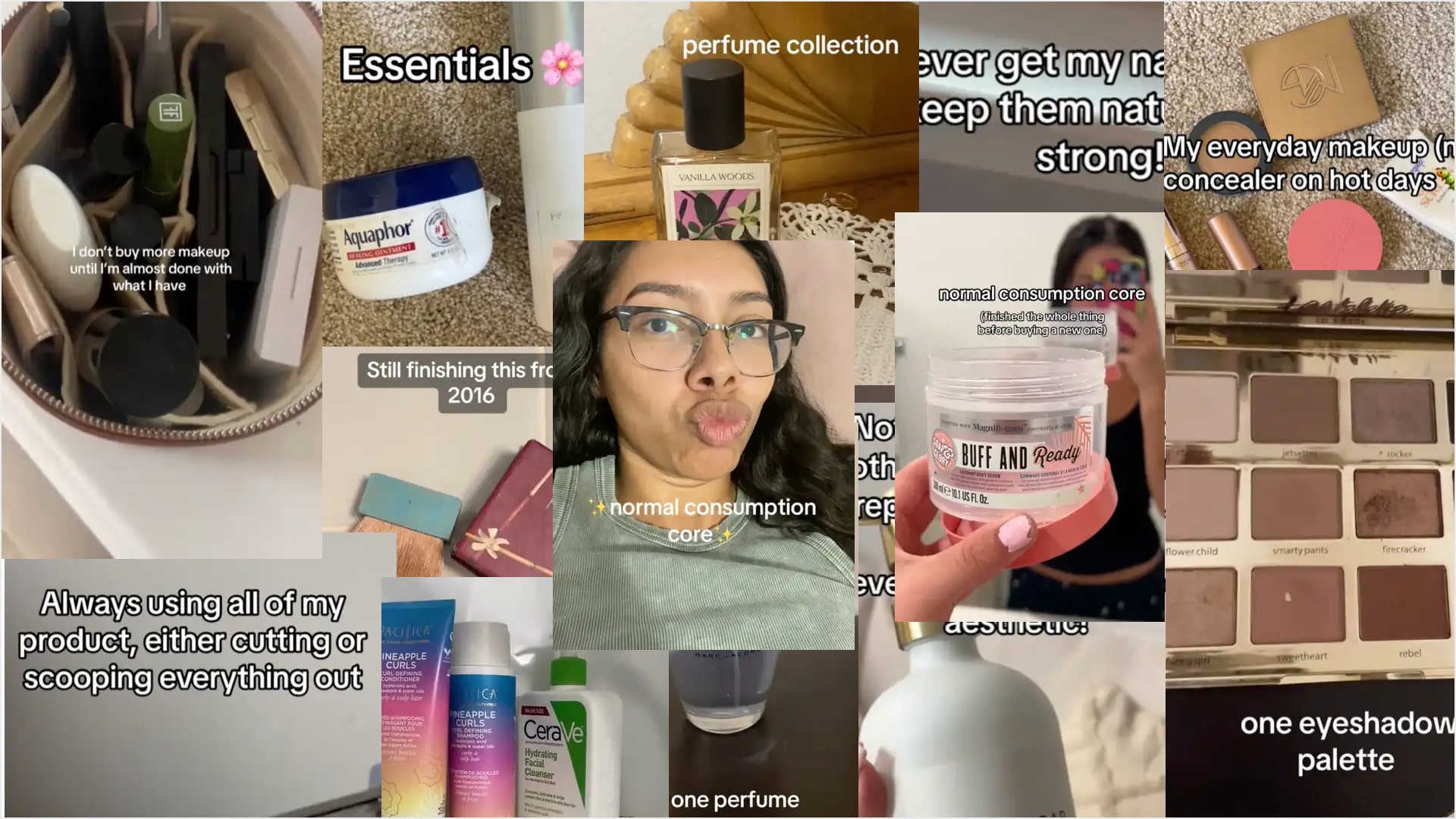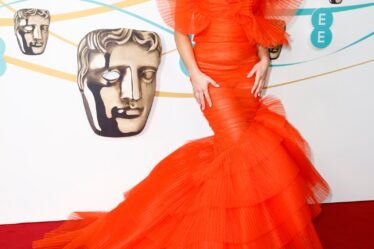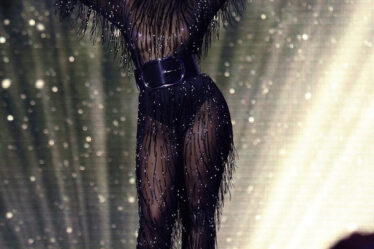
On an app where videos of multi-step, in-depth skincare routines proliferate, Natalie Rose’s regimen seems somewhat spare.
Her small makeup bag holds just six products, mostly from drugstore brands. She has a single pair of trainers to wear most days. For the shower, she has a shampoo, conditioner and a lone bottle of CeraVe cleanser.
“Perfume collection” reads the caption across a single bottle of perfume.
Beauty’s hottest buy right now is nothing at all. Users like Rose are taking part in TikTok’s latest trending “core,” called “underconsumptioncore,” also known as “normal consumption” or “meaningful consumption”). A typical video will show an individual trying to live more modestly when it comes to their shopping habits and daily routine, usually set to the song “Birds of a Feather” by Billie Eilish.
The goal isn’t isn’t necessarily to save money but “not wanting to engage in society’s pressure to buy,” said Casey Lewis, who writes the youth culture newsletter “After School,” as well as taking control and minimising waste.
“Tiktok has turned almost everything into an opportunity for consumerism,” said beauty journalist Laura Capon, who writes a newsletter called “Can We Discuss” about beauty and digital culture. “Even going for a walk is a shopping experience,” she said, referring to videos that show creators buying specific snacks, water bottles and accessories just to take a stroll.
It’s not the first time such sentiment has bubbled up on the app — underconsumption is something of a sequel to last year’s “deinfluencing” trend. Pushing back against unseemly excess is a sort of course-correction for consumers who feel jaded by influencers’ ongoing promotion of products and displays of their own wealth. Coupled with an ongoing high cost of living, rising consumer debt — according to the Federal Reserve, Millennial debt is higher than ever — and the proliferation of buy now, pay later services sandwiched between digital ads, it’s unsurprising that some are seeking to reclaim a simpler life.
Others, however, are looking to signal their virtue.
Value for Money
TikTok has become an incredibly promotional environment, as users can shop directly in the app, but are also constantly peering through the looking glass of others’ consumption habits. “Restocking” videos showing people re-upping their meticulously arranged pantry and refrigerator stashes of snacks and sodas, or their pristine vanities with premium personal care products are hypnotic to some, but off-putting to others. The same goes for those who post their extensive collection of Stanley cups, or Le Creuset cookware.
But not all underconsumption videos are simply about cost. In fact, many have a luxury bent, with the creator arguing a handful of prestige makeup products have lasted longer than cheaper alternatives and negated the need for other products. In one video, for example, a $75 Chanel foundation is touted as taking the place of multiple other complexion products.
Beauty frugality movements are nothing new — Reddit forums dedicated makeup and skincare have long had “what I’m not buying” style threads. But underconsumption differs from last year’s “anti-hauls” and “deinfluencing” with their focus on normalising a modest lifestyle, and on finding quality products, rather than trying to talk viewers out of buying specific products.
The beauty industry has readied itself, in part. The maximalism associated with the 2010s — bold eyeshadow, heavy contour and iPad-sized highlight palettes — has largely given way to a more minimal look with an emphasis on natural-looking skin. However, brands haven’t slowed their cadence of launches, with most trendy cosmetics brands offering multiple variants of products such as blush or lip gloss.
Capon said she’s seen videos where people show how many kinds of a certain product – blush, for example – they’ve built up. “There are some real makeup addicts … it’s a crazy amount of overspending,” she said.
Vice or Virtue?
Some of this content is designed to make viewers angry and engage with the video — also known as “rage bait.” Posting about your own modest consumption seems virtuous by contrast, said Capon.
“It’s kind of bragging that you’re not influenced,” she said.
Other creators using the trend are not fully aligning with its original intent by throwing out excess product, or showing hauls of second-hand clothing, said Lewis.
“There’s a second wave already where people are riffing and showing [excess consumption] using the template,” she said, adding those videos were light-hearted jokes at the creators’ own expense. “But a lot of these second-hand or minimal creators are actually consuming a lot of product.”
Neither Capon nor Lewis felt the trend was indicative of a long-term shift in shopping habits — people will still buy things that catch their eye — but saw it more of a slight temperature change in terms of consumers tiring of TikTok’s excessively promotional environment. Many viewers are keenly aware that influencers didn’t pay for many of the products they post about, even as they encourage their viewers to buy, creating a slightly fractious relationship.
Viewers are aware that buying lots of products doesn’t necessarily make them happy, said Capon, but that doesn’t mean the big TikTok sales machine is slowing down: Lewis said she’s already seen “back to school” haul videos ahead of the new school year in September.
Sign up to The Business of Beauty newsletter, your complimentary, must-read source for the day’s most important beauty and wellness news and analysis.


